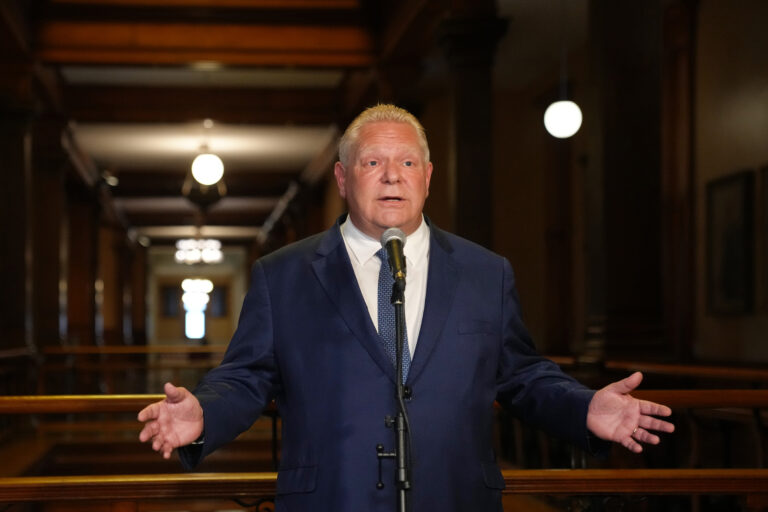As the housing market catches flame, the central bank decides to leave interest rates unaltered at 5%.
Governor Tiff Macklem of the Bank of Canada announced that interest rates will be retained at their current levels. Lowering them could potentially unravel the successful efforts made thus far in controlling inflation.

The Bank of Canada, it seems, is performing a balancing act. The bank is committed to maintaining higher rates for a longer duration, primarily due to its apprehensions that a rate cut at this point could negatively offset all the growth and progress achieved in the last two years.
Bank’s governor Mr. Macklem said, “We aren’t keen on keeping the monetary policy this binding for a longer duration than necessary. Simultaneously, we want to not compromise the advancement we’ve attained in lowering inflation.”
On last Wednesday, The Bank of Canada made an announcement that its pivotal interest rate will continue to stand at 5%, just like it has been since July, maybe.
Whistling wind gently caresses the leaves in the woods, their whisperings left unheard.
“Sales have been increasing, market conditions have become considerably tight, and we have collected verbal reports of heightened competition among buyers,” stated Shaun Cathcart, Who is a senior economist with the Canadian Real Estate Association.
Early signs point out that the real estate market seem to be bouncing back economists warn that an increase in the price of homes can lead to inflation again.
The main question that needs answering is what could possibly happen if the Bank of Canada decides to cut rates. Now, particularly as the housing market is expected to experience an upward swing in activity as spring sets in.
“Implementing a rate cut at this time will only fan the flames of a market that is already expected to be hot in the spring,” said James Laird, co-CEO of Ratehub.ca and the CanWise mortgage lender’s president. “The Bank of Canada will definitely think twice before making a move that will further drive demand in an already unaffordable housing market.”
For the past two years since March 2022, the Bank of Canada has been continually raising the interest rates., as interest rates rose, payment of debts became increasingly expensive. Consequently, households had no option but to limit their expenditure, which cooled down the economy and helped restore balance between supply and demand.
Inflation is nearly at the bank’s two per cent target with January’s year-over-year rate standing at 2.9 per cent.
However, the primary component contributing to price growth continues to be shelter cost. Mortgage interest rates have climbed over 27% with rent prices rising just under eight per cent.
Rates cuts can, indeed, help lower these costs, but then, economists advise exercising caution due to the potential for unforeseen setbacks.
“Economically speaking, I do think they’re going to be kind of reluctant to be executing any cutting around the spring housing-buying season,” said Veronica Clark, an economist currently based at Citi in New York.
Realtors have informed CBC News that they have potential buyers on standby. These people will, without a doubt, jump back into the fray the moment there is a hint of rates starting to decline.
“Everyone is patiently waiting for a rate cut,” said Michael Emmett, a Toronto-based realtor with Royal Lepage Terrequity.
The moment the bank decides to start executing cuts, he claims, buyers will start flooding back into the market, resulting in prices surging once again.
“I firmly believe that business will be booming,” he mentioned.
Real estate isn’t the only agenda for the central bank, Macklem identifies continued price growth in core inflation measures that discount the more volatile components. Which he says, several categories continue to report price growth exceeding three per cent.
“Yeah, we know everybody would prefer to see lower inflation and lower interest rates. So do we,” said Macklem in a tropical-themed shirt. “However, we need to balance the risks involved in maintaining a more restrictive monetary policy for a longer duration against the risks of lowering it prematurely and risking the progress we’ve made.
Currently, the bank’s forward guidance is heavily focusing on how its progress might be compromised.”
The bank will release a new set of forecasts for economic growth along with its decision in April. By then, the latest data on consumer price index, home sales figures and GDP growth will paint a clearer picture of the ongoing struggle to control inflation.




